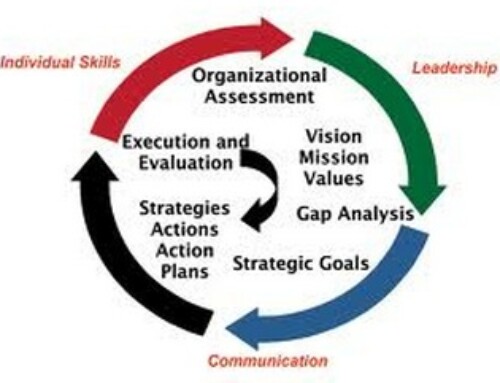 Real estate professionals today, for the most part, advise clients on both buy and sell decisions with data that is, in many ways, inaccurate. It is inaccurate because sales data is the result of offers that were made and accepted months earlier. Things change quickly in our business, or at least they can. We need to know what is happening today yet our basic MLS data model can only tell us historic sales information and current listing information. Today, neither of these data sets necessarily reflect what is actually happening in our market in terms of buyer activity and interest.
Real estate professionals today, for the most part, advise clients on both buy and sell decisions with data that is, in many ways, inaccurate. It is inaccurate because sales data is the result of offers that were made and accepted months earlier. Things change quickly in our business, or at least they can. We need to know what is happening today yet our basic MLS data model can only tell us historic sales information and current listing information. Today, neither of these data sets necessarily reflect what is actually happening in our market in terms of buyer activity and interest.
These are the times you may feel as though you need the help of a database analyst to figure it all out.
Our agents, who do the best they can with the data they have, are handicapped by the data they have to work with. Helping buyers and sellers make decisions with old and incomplete data is like steering a boat by looking at the wake you left behind rather than the rocks or the clear channel that are out in front of you.
I have complained for years to many of my MLS vendor client friends that our industry has always done a horrible job using the data we have in our positions at the MLS level. Our historical data goes back years and years but how do we make it available to our real estate professionals? In most cases it is available via pretty boring and narrow view reports. We can look at total sales, average price, off market activity via snapshot reports but other than through very specialty software have I seen really strong analysis tools, yet the data is right there waiting to be mined! Yes, graphs have gotten better and some vendors do better than others but there is so much more we can do!
Imagine this! Imagine that I could sit down with a seller and show them via a nice, graphical interface, a picture of the MLS sales data, listings, solds, etc., most likely with a map view, where sales trends flow across the screen over time, forward or backward. Imagine looking at the map of a city and being able to watch in a 3-year view how neighborhood values have shifted and sales have occurred as certain areas become popular or lose values. This wouldn’t be hard really; the data is all there. The trick is finding a good way to represent it graphically. In my mind I see it like a weather map where clouds move across an area just like sales do. Wouldn’t that be a nice feature for agents to help their clients better understand the market?
The best product I have seen so far do this type of presentation with various data sets is the MOVE “Find” product. It is an outstanding search and display feature and if you haven’t seen take the time to do so, it is really a step above everything else in our industry in my opinion in this regard.
Going back to the MLS world, though, let’s take it a step further. Instead of looking at historical/dated information, what if I could show both real estate professionals and consumers what is happening today in my market? What if I could see what was happening ahead of the sales by having transparency into the “offers” that are taking place? Think about what that would do for us in terms as real estate professionals. Agents would see, for instance, that activity was picking up in certain areas well ahead of actual sales, with sales we only see one historical event. With offers, though, we might see 10 different events on a single property in a hot market. Isn’t that valuable information?
Imagine the CEO of a major MLS addressing the Media
Reporter asking questions: “Can you tell us what you envision for the next few months in terms of sales?”
MLS CEO responds: “If we look at our sales data over the last year, we are on par with 12 months ago, however, when we look at current “offer” activity we are seeing a huge spike in buyer interest. And, most importantly, the offers we are seeing show a significant up tick in values…”
The point here is that today we don’t know what is happening in our markets., we only know what has happened.
I became aware of this whole dynamic through my work with a company called Realty Pilot that offers a number of real estate products, one of which is called “Offer Runway”. Offer Runway is offered free to MLSs, though the company does have products they sell directly to brokers and agents. What is interesting about “Offer Runway” and the reason I am writing this post today is the fact that I believe it is a foregone conclusion that this technology (patent pending) will be in common use in our industry in the very near future. The question is, who will deliver it? Realty Pilot is very interested in working with MLSs to deliver this service and are talking to numerous MLSs today to make that happen but in truth, the service could just as easily be offered through a broker website or a 3rd party portal like Zillow! All you need to make this service viable is access to a listing display where an offer button can be placed that begins the whole process. Once an offer is made through the system numerous benefits occur. Brokers can now track and monitor the process of offers, the MLS gets access to great current data they can share with their members, and buyers and sellers get the real story of what is happening in the market. If you think down the road a bit, what this data will actually be, if successful, is a new valuation index that simply doesn’t exist today. I think that is pretty exciting.
By way of disclosure Realty Pilot is a WAV Group client, however, we are in no way compensated if MLSs use or don’t use the product. We just think it is a very cool idea and don’t see a down side to it, especially since it’s free!
Don’t Let Third Parties Do What MLSs Should Do!
In conclusion, what I am really talking about whether we use the example of “Offer Runway”, consumer websites, reputation management or any number of services, is the fact that MLSs need to realize they are not the only point of delivery anymore for real estate information and real estate tools and that once they pass up an opportunity it may be gone forever or at least put into a “try to catch up” position, like they are with 3rd party consumer sites. During strategic planning sessions I advise my clients to ask themselves this question as they look at services like “Offer Runway” or “Agent Ranking”, as part of their decision process:
Is this product/service going to happen in our industry one way or another and is it something that will affect all real estate professionals?
If the answer is “YES”, and it is not something the Brokers are using as a “marketing advantage” than let’s do it at the MLS level and control it, and create it with strong standards and accurate data. Also, let’s take credit for the fact that the MLS is doing it and not turn over more and more great products to 3rd parties.





Agreed – I think that RPR, 10K, Terradatum, Clarus MarketMatrix, TrendGraphics, MRIS’s RBI Intel are aimed at accomplishing exactly what you are referring to in terms of looking backward and looking at pending sales.
It would be interesting to combine the “offer” information with lockbox showing data too.
Mike, do you know if the forms or signature providers like Instanet, ZipForms, or DocuSign provide any reports on Offers to MLSs today? Presumably they are using the forms.
You are spot on. MLS’s need to track more leading indicators to provide intelligence to their agents. Some boards track pending sales which is an excellent leading indicator and you mentioned lockbox data which is excellent. We should look for ways to take this even further. For example CREB (Calgary real estate board) uses an electronic system to set up and communicate showings called “touchbase” allowing agents to click on a link in the listing and schedule a showing. We are working to produce a running chart of daily showing activity in the Calgary – perhaps soon we will be able to show it by neighborhood and produce heat graphs of which areas have the most showing activity over a period. But since showings are normally booked the day before, we should now be able to view the activity for the next day. Now that’s a leading indicator!
Technology Concepts did quite a bit of work on predictive analytics back in 2005 and 2006. We did things such as propensity to buy, predicted selling price and DOM, etc. At that time we were apparently too far ahead because the interest from MLSs (and brokers) was minimal. They simply didn’t understand (or believe) the power of aggregated data and the analysis thereof.
[…] […]